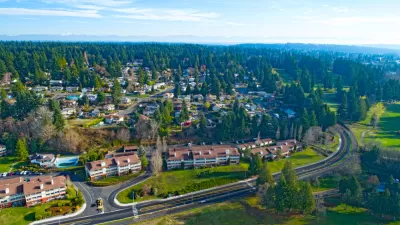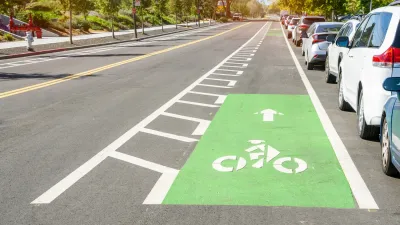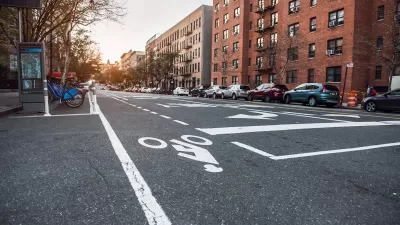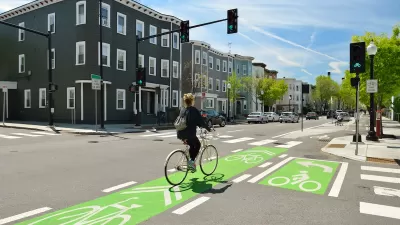A new requirement that mandates bike and pedestrian improvements on state road projects is starting to pay off with real commitments to Complete Streets infrastructure.

According to an article by The Urbanist’s Ryan Packer, Washington state’s new Complete Streets law is starting to pay off. Part of a legislative package known as Move Ahead Washington, the mandate requires the Washington State Department of Transportation (WSDOT) to “coordinate adding bike and pedestrian facilities when basic maintenance is planned.”
As Packer explains, “Any state highway projects over $500,000 in cost now require the state to evaluate whether gaps in both existing bicycle and pedestrian networks can be filled, and standards are required to be adhered to when it comes to separation between those facilities and automobile travel lanes.”
The law could soon prove itself in Edmonds, where a “full overhaul” of State Route 99 is underway. For Edmonds, the new requirements mean adding 4.5-foot bike lanes in each direction to their original road redesign plans. “The real time changes we see to accommodate the extra nine feet of space required are planned buffers and planting strips narrowing and the twelve foot business access-and-transit (BAT) lanes shrinking by one foot each. Otherwise the six travel lanes along the highway are unaffected.” These small but important changes, Packer notes, would have been left on the table without the Complete Streets law.
Packer details the funding allocated to Complete Streets and other projects around the state slated to get bike and pedestrian improvements. Optimistically, Packer concludes that “The new requirement has the potential to correct decades of oversights from local leaders and transportation officials when it comes to the bike and pedestrian networks on Washington’s state highways.”
FULL STORY: Washington’s Complete Streets Mandate Starts to Pay Dividends

Planetizen Federal Action Tracker
A weekly monitor of how Trump’s orders and actions are impacting planners and planning in America.

San Francisco's School District Spent $105M To Build Affordable Housing for Teachers — And That's Just the Beginning
SFUSD joins a growing list of school districts using their land holdings to address housing affordability challenges faced by their own employees.

The Tiny, Adorable $7,000 Car Turning Japan Onto EVs
The single seat Mibot charges from a regular plug as quickly as an iPad, and is about half the price of an average EV.

As Trump Phases Out FEMA, Is It Time to Flee the Floodplains?
With less federal funding available for disaster relief efforts, the need to relocate at-risk communities is more urgent than ever.

With Protected Lanes, 460% More People Commute by Bike
For those needing more ammo, more data proving what we already knew is here.

In More Metros Than You’d Think, Suburbs are Now More Expensive Than the City
If you're moving to the burbs to save on square footage, data shows you should think again.
Urban Design for Planners 1: Software Tools
This six-course series explores essential urban design concepts using open source software and equips planners with the tools they need to participate fully in the urban design process.
Planning for Universal Design
Learn the tools for implementing Universal Design in planning regulations.
Smith Gee Studio
City of Charlotte
City of Camden Redevelopment Agency
City of Astoria
Transportation Research & Education Center (TREC) at Portland State University
US High Speed Rail Association
City of Camden Redevelopment Agency
Municipality of Princeton (NJ)





























